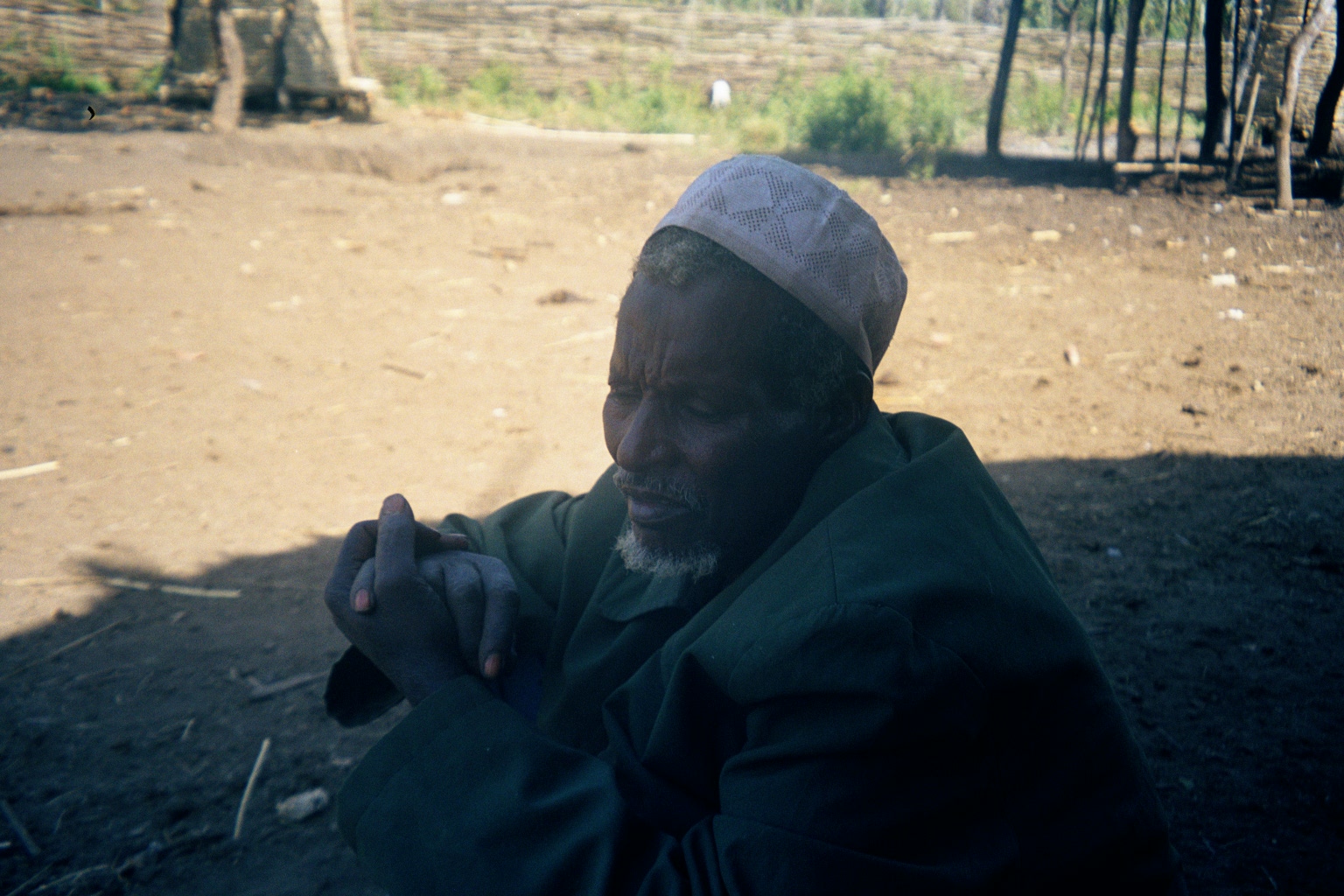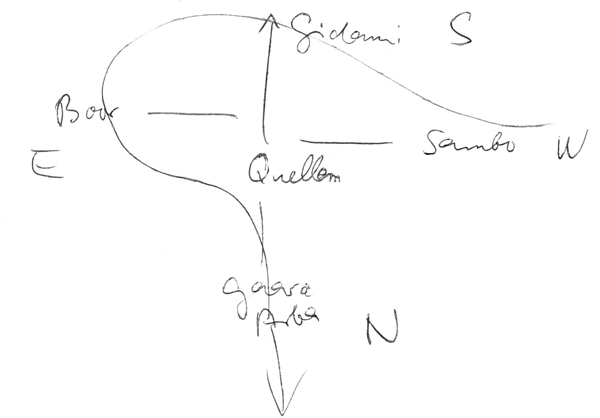|
Waypoint 091 | Lat. 9° 35′ 48.3″ N / Long. 34° 40′ 11.27″ E Fulɓe camp near the bridge across the Qashmando |
Muhammad Zakariya says he is Woyla. The Woyla are one of the Fulɓe groups, and as such comparable to Mbororo, Jaafun, Gamba (Gambiranko’en?), Booɗi, and Ngara. They originally come from Mali and are thus "Fallaata Malle". Muhammad knows Sheikh Baabo ʿUmar in Damazin. But his own sheikh there is Suleymaan Bello, the Woyla sheikh. According to Muhammad, Sheikh Baabo is in charge of the group referred to as "Mbororo" in the narrow sense of the term.
As implied in the preceding passage the term 'Mbororo' is sometimes used in a broader sense and applied to various groups of nomadic Fulɓe, as opposed to settled Fulɓe. In some other situations, it has a more specific meaning and is just employed to refer to one section of nomadic Fulɓe in particular (apparently Mbeewe’en; see also entries for September 23, and September 25, 2002).
Concerning the SPLA raid against nomadic Fulɓe (or Mbororo in the wide sense of the term; see entry from November 24, 2001) Muhammad explains that it took place four years ago in the month of dahiyya (= arrafa). That was during the rainy season. Many of his own cattle were also taken. The cattle belonged to different Fulɓe sections: Mbororo, Jaafun, Gamba, Woyla, and Fallaata Malle. All pack-oxen were killed or taken. The women had to carry the household items themselves. In one attack, there were 40 dead among the nomadic Fulɓe; in another attack, 12 men, women, and children were killed. The police did not even come to look. The police themselves had tried before to expel the nomadic Fulɓe, and they now seemed to welcome the SPLA action. The nomadic Fulɓe then concluded an agreement with the SPLA. The SPLA received 100 sheep as payment for letting these Fulɓe move away without further molestation. The SPLA took the sheep, but attacked the nomadic Fulɓe again nevertheless. Muhammad does not know how many lives were lost in this last raid.
In earlier years, Muhammad’s residential group seems to have been moving regularly between the low lying Yabus area and Beni Shangul. Muhammad decided seven years ago to stay here. For the others this form of transhumance found a violent end four years ago. (I found other members of the same group in a fully functional nomadic hamlet in October 2002 north of Damazin, Blue Nile State, Sudan; see below, entry for October 2, 2002)
Muhammad’s six-year-old daughter was born after he had been here for a year. She knows both Oromo and Fulfulde and is to go to school. Four of his children live with Muhammad; other children live with his other wife near Yabus. Muhammad has not heard from them in seven years. But he seems confident that they are still alive.

Muhammad Zakariya
Move mouse over picture for larger version
|
Waypoint 097 | Lat. 9° 20′ 53.25″ N / Long. 34° 31′ 46.9″ E Begi |
|
Waypoint 101 | Lat. 9° 10′ 45.94″ N / Long. 34° 31′ 42.11″ E Qelem Manamo |
(Sketch) Map 6: Seasonal migration routes of Mbororo around Qelem

